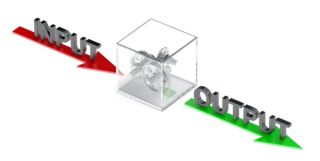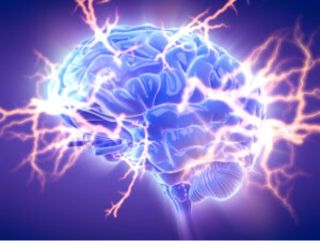Cognition
We Have No Protection From Mental Pain
It is more problematic than physical pain.
Posted June 25, 2023 Reviewed by Hara Estroff Marano
Key points
- Pain is a protective signal of danger meant to guide a responses to resolve the danger and remain safe.
- Pain is a signal of the nociceptive system, guiding behavior to not exceed the limits of a structure.
- Feedback from internal organs is called interoception.
- There is no protective feedback loop for mental pain.
Although humans are programmed to avoid or resolve physical threats, we do not have inherent mechanisms to deal with mental threats.
Staying alive
Every living creature, from single-celled organisms to mammals, has two biological mandates. The first is to survive, and the second is to pass their genes to the next generation.
In order to avoid danger, seek safety, and stay alive, data is gathered through sensors located on every cell in your body. All this information is continually interpreted by your nervous system to assess whether a situation is safe or dangerous. Signals are then sent out from the nervous system to regulate and control your body’s next actions to optimize survival. A major point is that the nervous system is necessary to interpret the intensity and type of input from pain sensors. Otherwise, pain would not exist.
There are many different pain signals— hot/cold, loud/soft, sharp/ dull, pressure, light touch, and position. When pain receptors send messages to the brain that a given structure in the body is at risk for danger, the brain sends out automatic signals to withdraw from the dangerous situation. Pain is protective and we cannot survive without it. It is a gift.
This protective system, which operates without your awareness, is called the nociceptive pain system. What you may not realize is that it is focused on guiding actions and behaviors so that we can avoid pain and can get on with our lives safely. It is only when the limits of a given bodily structure are approximated or exceeded that the intensity of signals reaching the brain is interpreted as "danger!" Such signals have evolved to be so unpleasant so as to compel attention and action. It is how living creatures survive. It is also the reason why, when the finely tuned protective pain system becomes unbalanced, chronic pain is so tragic.
Protective responses
There are four levels of response to signals from your external environment and internal organs. The variables are intensity and duration.
- None/protective: Your body is guided to remain safe.
- Withdrawal: Any physically perceived threat is met with a quick response.
- Symptoms/Illnesses: Prolonged threat, diminishings/resolving with a lower threat load.
- Diseases: Sustained threat: your body breaks down, causing structural damage.
There are rare instances in which people are born without pain fibers. Since they lack sensation intended to protect them, their tissues and joints break down, becoming deformed and infected. They live only 10-15 years and usually die from infection.
There are also diseases that destroy protective sensation; leprosy and diabetes. are examples Again, the limits of body tissues are regularly exceeded, and they break down. Often a joint will become a "bag of bones." Survival depends on your brain accurately processing sensory input, detecting threats, and sending out signals that are meant to spur you to take protective action.

Uniquely human
In addition to input from eyes, ears, nose, mouth, skin, and internal organs, humans also receive input in the form of threatening thoughts. Unpleasant thoughts are processed in the same regions of the brain as physical pain1 and set off the same flight-or-fight response. Hence the phrase, "You hurt my feelings."
The brain generates survival signals that are intended to be so unpleasant that the organism is compelled to respond in a way to resolve the threat. Once the problem is solved, your body returns to its baseline. Whenever a given response doesn't solve the real or perceived danger, the body's physiology remains in an activated threat state. Sustained threat causes symptoms, illness, and disease.
Many, if not most, people have stresses that are not solvable, and avoiding stress becomes its own stress. As your body kicks in more of a stress response, you'll feel trapped. The longer and more intensely you feel trapped, the greater the effects on your body.
There are many ways of minimizing the impact of stress. However, a universal problem is the inability to escape from unpleasant thoughts. The sustained threat physiology that results may be a powerful force in driving chronic disease.
Your brain on fire
A significant percentage of your brain is intertwined with the immune system, and signaling molecules (cytokines) fire up an inflammatory response. Your brain is not only hyperreactive but also inflamed. Thoughts fire up the nervous system, and then your brain fires off disruptive thoughts.

Your thoughts, concepts, and behavioral reactions eventually become permanently embedded (memorized) in your brain and are unresponsive to rational interventions.2 They become your "demons," which strengthen over time.
All humans have some level of annoying, undesirable thoughts that aren't problematic. Many experience them at a level that interferes with their enjoyment of life but doesn't affect their capacity to function. Others are greatly affected without carrying a diagnosis of OCD (obsessive-compulsive disorder). Coping behaviors include suppressing thoughts, rigid thinking, binge eating, eating disorders, skin picking, nail biting, hair pulling, worrying, hyperfocusing on appearance, body image issues, and addictions.
Repetitive unpleasant thoughts (RUTs) are worsened when people try to fight or control them3. Attempts at mental control requires persistent attention, reinforcing the unwanted thoughts. Suppressing them is even worse. Feeling trapped creates intense irrational reactions and dysfunctional behaviors, doing a lot of damage to you and others around you in addition to illness, symptoms, and disease. We humans do not have an automatic withdrawal response to mental pain; we have no protection at all.
Recap
The inability to protect ourselves from unpleasant thoughts drives threat physiology, creates many dysfunctional behaviors, and causes symptoms, illness, and disease. There are many benefits to human consciousness, but this aspect of it is "the curse of cognitive consciousness." We have learned to physically survive but have not consistently figured out how to thrive.
References
1. Eisenberger N. "The neural bases of social pain: Evidence for shared representations with physical pain." Psychosom Med (2012); 74: 126-135.
2. Feldman Barrett, Lisa. How Emotions are Made. Houghton Mifflin Harcourt, New York, NY, 2018.
3. Wegener DM. The Seed of Our Undoing. Psychological Science Agenda (1999)/ 10-11.




